From Bologna to Salerno - Discovering Herculaneum (7/9)
Herculaneum
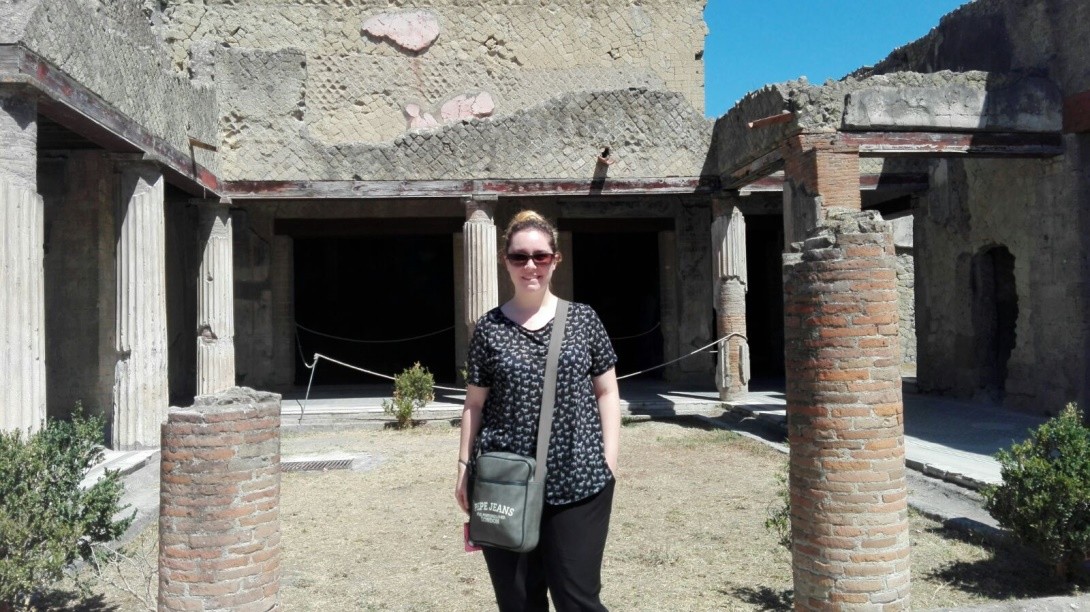 In the ruins of the Roman city of Herculaneum
In the ruins of the Roman city of Herculaneum
Another archaeological area very close to Naples is Herculaneum, another known city that, like Pompeii, it was buried under ash. Although I was dying to visit Pompeii and it was a unique experience to walk through Roman streets, the truth is that I liked Herculaneum much more. This second city was much better preserved than Pompeii and, even if it's not as big, perhaps it demonstrates more clearly to the public the lifestyle of the Ancient Romans.
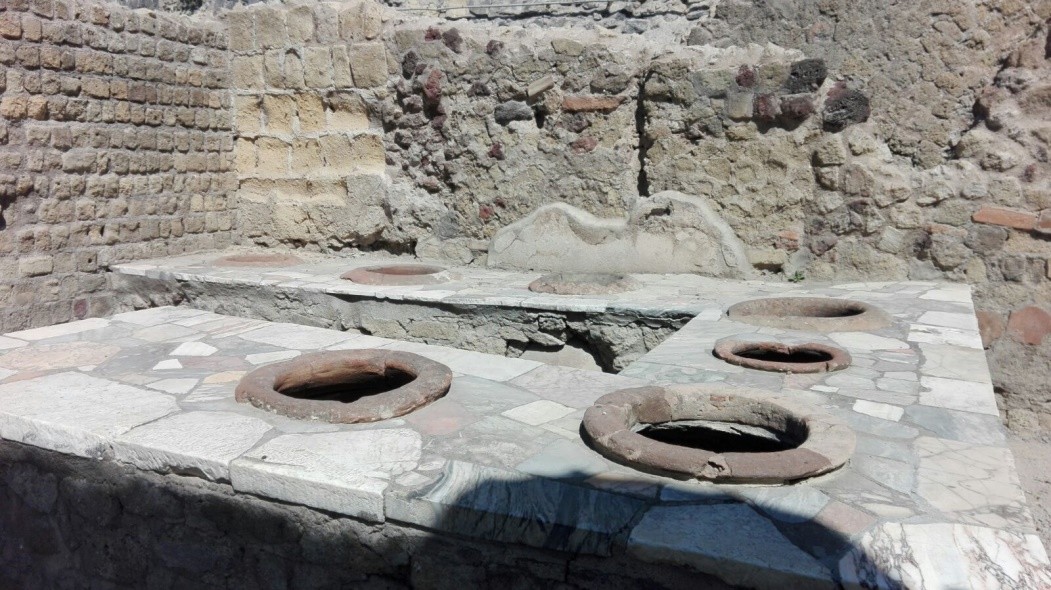 Counter of a taberna in Herculaneum
Counter of a taberna in Herculaneum
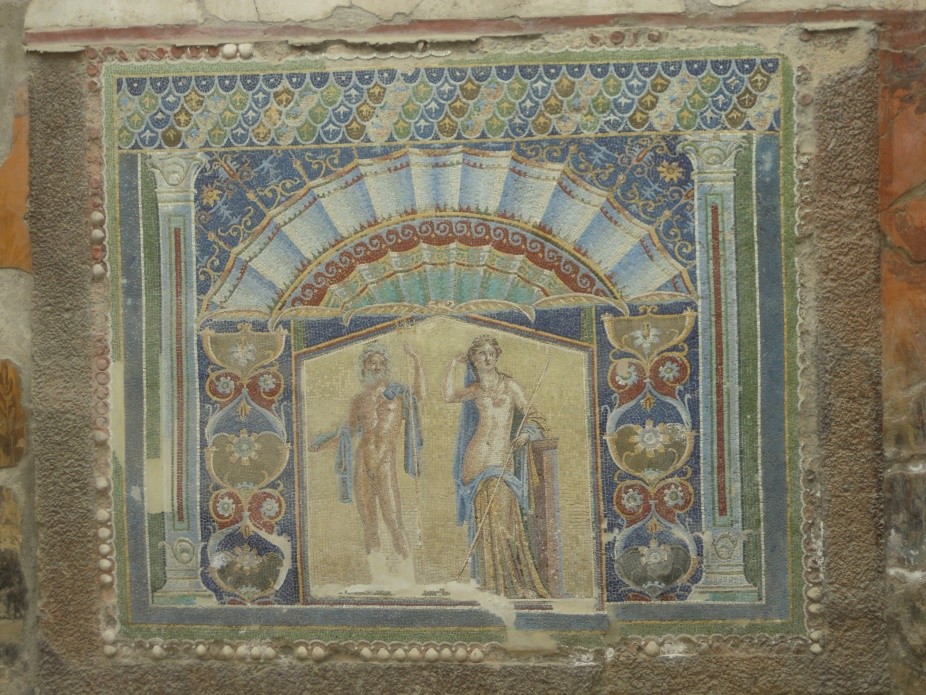 Details of the Mosaic of Neptune and Amphitrite, nymphaeum in a private house in Herculaneum
Details of the Mosaic of Neptune and Amphitrite, nymphaeum in a private house in Herculaneum
The stop Ercolano Scavi is on the same line as Pompei Scavi, that's to say, the line that goes to Sorrento. Given that Herculaneum is closer, the cost of a return ticket is €4. 10 on the Circumvesuviana. The journey lasts around 20 minutes. The station is very close to the excavations: you need to go down a street that will lead you directly to the archaeological area in 5 minutes. On this same streets there are many bars and restaurants where you can eat for as little as €5.
Something that really caught my attention having visited the cities buried by the ferocity of Vesuvius, is that there's currently a population that are still living in the foothills that surround the volcano: it's still an active volcano.
Concentrating on the city of Herculaneum, skeletons were discovered there, whose postures indicate an instant death: these people were exposed to temperatures as high as 500º C. Even so, there was no evidence in Herculaneum that the lava reached the city.
In Herculaneum you won't find figures as enigmatic as those of Pompeii: the corpses in Pompeii and Herculaneum are different as Pompeii is several kilometres further away from Vesuvius than Herculaneum and, when the lava streams reached Pompeii, they were 400º C colder, so the population were killed instantly, but their flesh wasn't burnt to a crisp and their bodies remained immobilised in the ash. Herculaneum was subject to a much hotter pyroclastic flow, so not even the skin of the people fossilised: only their bones remained.
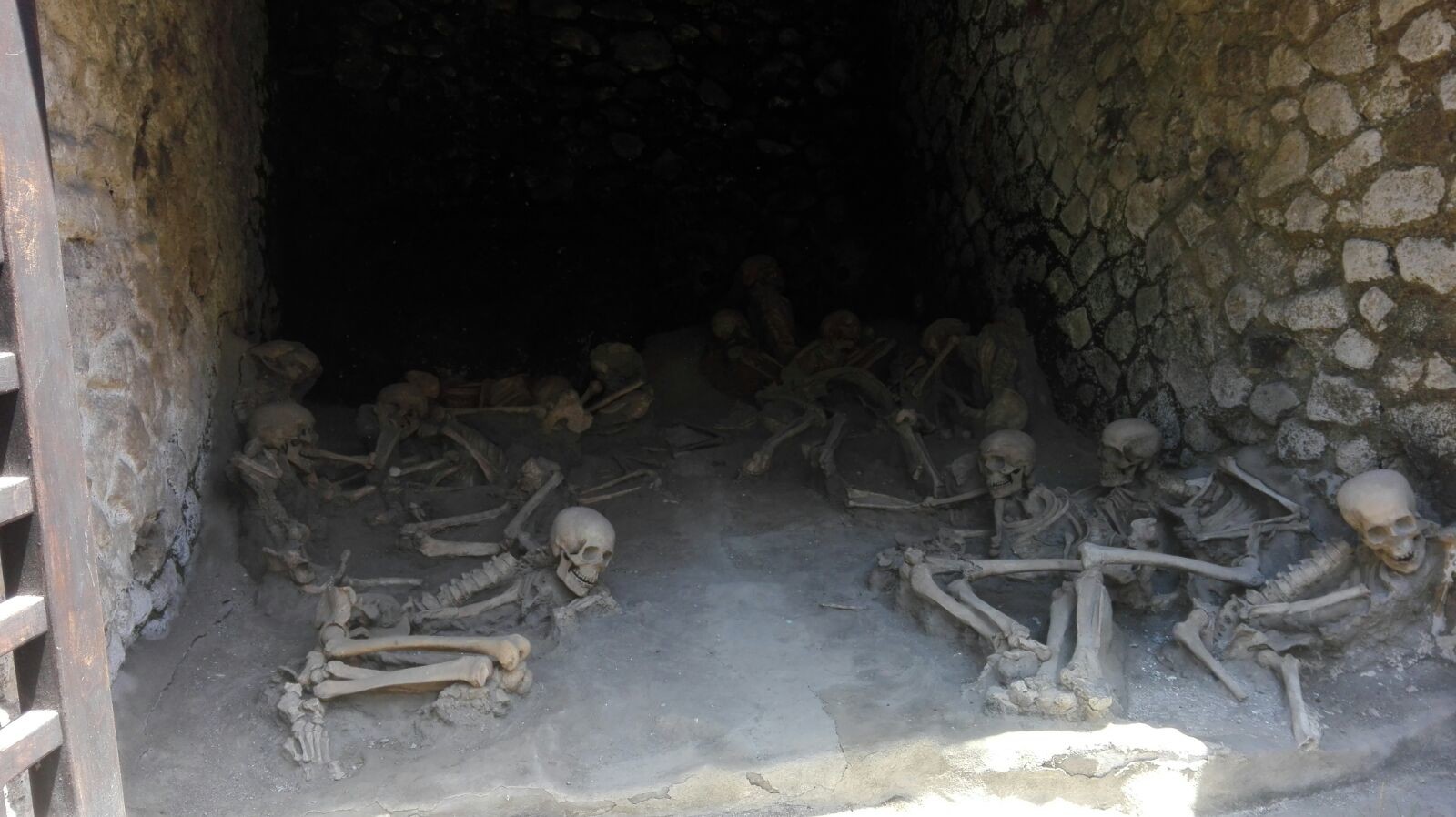 Skeletons in the lower zone of the city of Herculaneum
Skeletons in the lower zone of the city of Herculaneum
Herculaneum, which is much smaller than Pompeii, and has less visitors, also has an information point at the entrance which offers free maps and leaflets of the city and its history.
Also inside the premises there's a restaurant in a terrace. The city in itself is in a much lower zone, which is accessed via a bridge and an underground gallery.
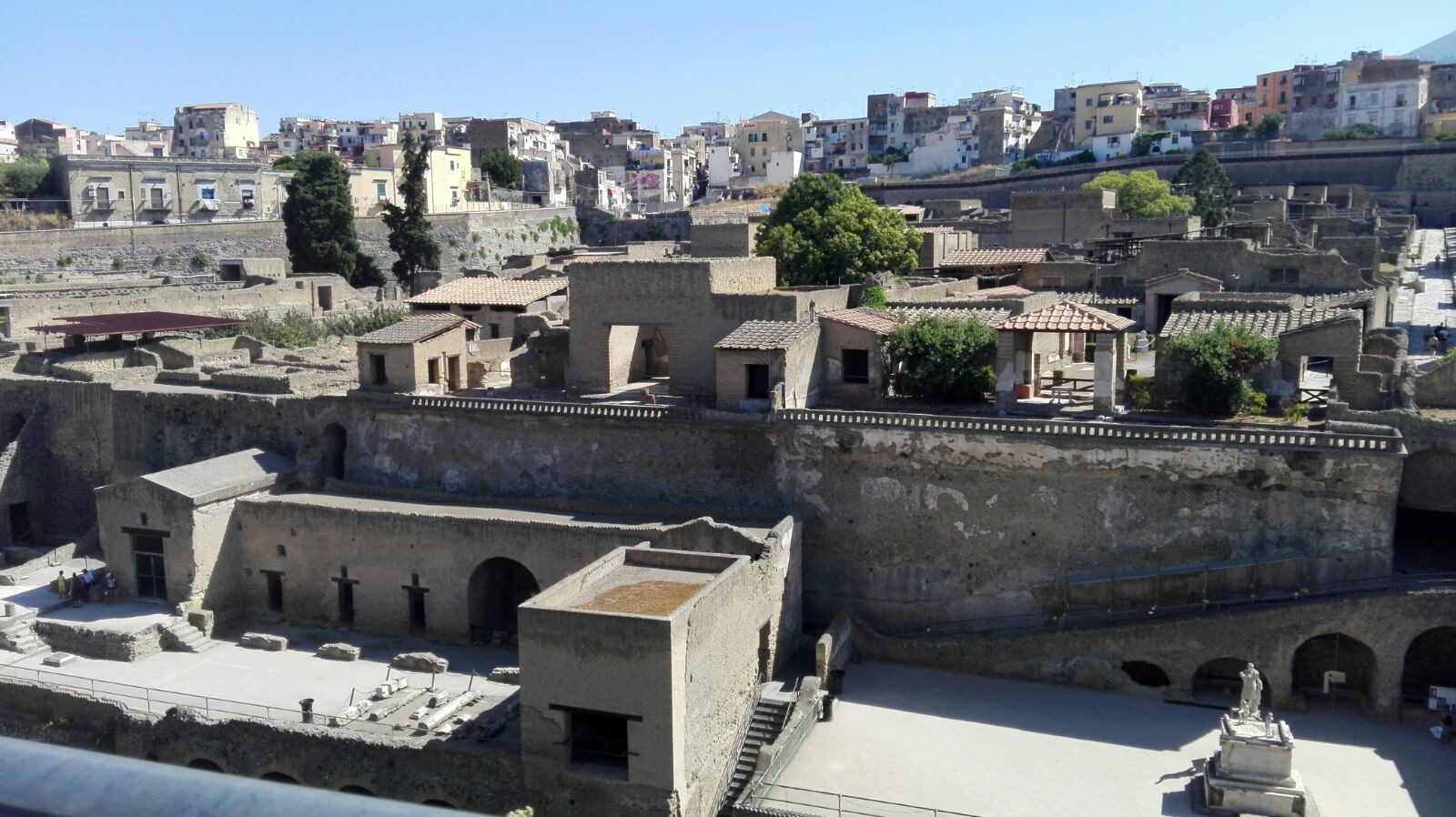 View of the Roman city of Herculaneum, together with the modern city in the background
View of the Roman city of Herculaneum, together with the modern city in the background
One of the places that impressed us the most was the Museo Archeologico Virtuale; with the reduced price for students, the entry cost us €6 per person and you can enjoy the digital reconstruction of the devastated areas, and also a 3D film projection, with 360º vision and special effects, that recreated the moment of Vesuvius' eruption; it's based on the account of Pliny the Younger, it lasts around 15 minutes and it turns out amazingly. This peculiar museum is a feast of technology, the exhibitions surpass your expectations and you don't imagine that it will be so tangible, everything is virtual. I won't say any more, I'll only tell you that this place is a must-visit if you ever go to Herculanuem. I suggest visiting the museum before going to see the remains of the ancient settlements; it will be enhanced by your knowledge of how life was back then and you'll know how these Roman cities looked before the tremendous tragedy that ended the lives of so many people 2000 years ago.
But there's more to Herculaneum than just the area of the excavations; outside this area there are much fewer tourists and there are also things to see.
For eating, I recommend the restaurant A´Reginella (Via Vittorio Veneto, 14), a pizzeria with more than affordable prices... and some delicious scallops! (cotoletta alla milanenese) But don't forget to try Gnocchi Sorrento either.
There's also an interesting street market, the Mercato di Resina, which is referred to as the "Portobello of South Italy". It's on Via Pugliano and it's Italy's most famous open air "retro" market, although not all the prices are "from the good old days". It's full of people and they sell almost everything; if you go, you'll find something interesting. I had two bags; and I didn't buy any more things because I had no space in my suitcase.
Our next appointment: Sorrento
Photo gallery
Content available in other languages
Want to have your own Erasmus blog?
If you are experiencing living abroad, you're an avid traveller or want to promote the city where you live... create your own blog and share your adventures!
I want to create my Erasmus blog! →




















Comments (0 comments)